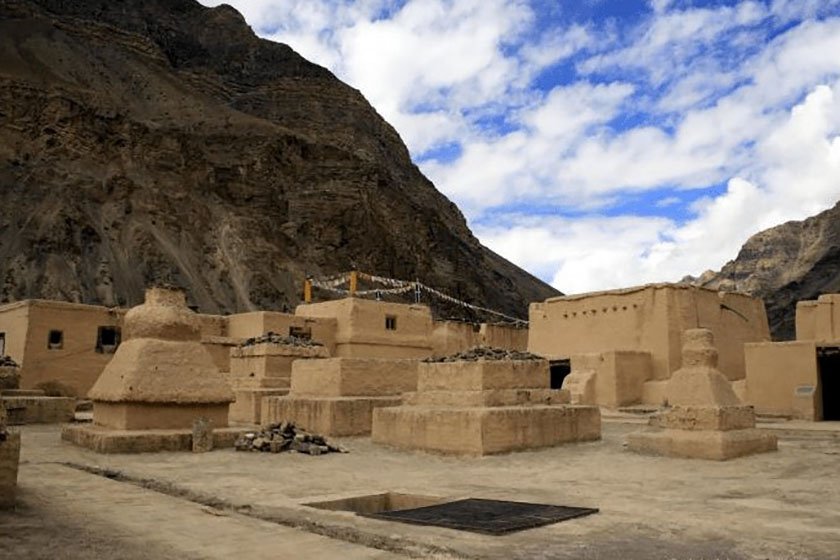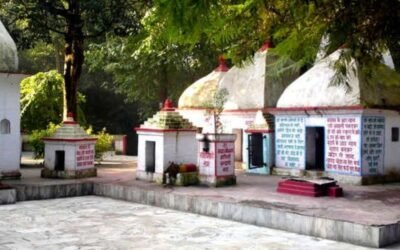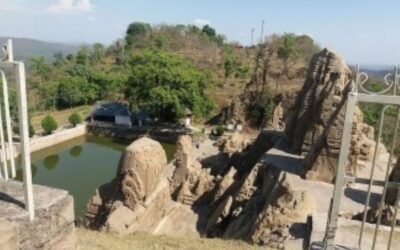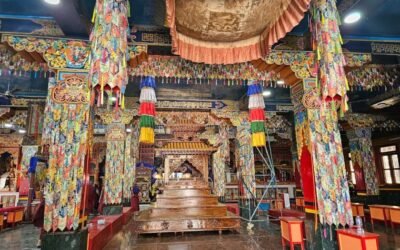Cradled in the stark, high-altitude desert of Spiti Valley, the Tabo Monastery—founded in 996 CE—is one of the oldest continuously operating Buddhist monasteries in the Himalayas. Revered as the “Ajanta of the Himalayas” for its exquisite murals and frescoes, this sacred enclave is a living testament to over a millennium of Tibetan Buddhist art, philosophy, and monastic life.
🌄 Location & Accessibility
- Location: Tabo village, Spiti Valley, Lahaul & Spiti district, Himachal Pradesh
- Altitude: ~3,050 meters above sea level
- Nearest Towns: Kaza (48 km), Reckong Peo (149 km), Shimla (337 km)
- How to Reach:
- By Road:
- From Shimla via Kinnaur (open year-round, weather permitting)
- From Manali via Kunzum Pass (open May–October)
- By Rail: Nearest station – Kalka or Pathankot
- By Air: Bhuntar (Kullu) or Shimla airports; Chandigarh for better connectivity
- Local Transport: Buses and taxis from Kaza or Reckong Peo
- By Road:
🛕 Historical & Spiritual Significance
Founded by the Tibetan translator Rinchen Zangpo under the patronage of King Yeshe-Ö of the Guge Kingdom, Tabo was envisioned as a daughter monastery of Tholing Monastery in western Tibet. It became a center for Buddhist learning, translation, and art, and played a pivotal role in the second diffusion of Buddhism into Tibet.
The monastery has survived earthquakes, invasions, and centuries of isolation, yet remains a beacon of spiritual resilience. The 14th Dalai Lama has called it one of the holiest sites in Tibetan Buddhism, and even expressed a desire to retire here.
🕉️ Deity & Worship
The central deity at Tabo Monastery is Vairocana Buddha, representing the cosmic embodiment of wisdom and emptiness. He is enshrined in the Tsug la Khang (Main Temple) at the heart of a Vajradhatu Mandala, surrounded by 32 life-sized clay Bodhisattvas. Worship follows Gelugpa monastic rituals, including daily chanting, butter lamp offerings, and prayers for world peace. The monastery serves as a center for both scriptural study and tantric practice, and monks maintain strict meditation and prayer cycles throughout the year.
🏛️ Architectural & Artistic Marvels
- Nine temples, four decorated stupas, and 23 chortens within a mud-walled complex
- Main Temple (Tsug la Khang):
- Houses the Vajradhatu Mandala, with a central Vairocana Buddha
- Surrounded by 32 life-size clay sculptures and 15th-century murals
- Golden Temple (Ser-Khang): Once gilded in gold, now adorned with sacred murals
- Bodhisattva Maitreya Temple: Features a 9.5-ft statue of the future Buddha
- Cave Shrines: Carved into the cliff above the village, used for meditation and retreat
- Library & Museum: Preserves ancient thankas, manuscripts, and scriptures
🎉 Festivals & Monastic Life
- Kalachakra Festival: Initiated by the Dalai Lama in 1983 and 1996; held every few years
- Chakhar Festival: Celebrated every three years with Cham dances, rituals, and community feasts
- Daily Prayers: Visitors can attend morning and evening chants with resident monks
- Monastic Guesthouse: Offers simple lodging for spiritual seekers and travelers
🏞️ Nearby Attractions
- Tabo Caves: Ancient meditation caves with panoramic views of the Spiti River
- Dhankar Monastery: Cliffside gompa overlooking the confluence of Spiti and Pin rivers
- Pin Valley National Park: A haven for snow leopards and Himalayan wildlife
- Kaza, Hikkim, Langza, and Komic: High-altitude villages rich in culture and fossils
🙏 Spiritual Experience
The Tabo Monastery is not just a monument—it’s a living mandala, where art, silence, and devotion converge. As you step into its dimly lit halls, lit only by a skylight and butter lamps, you feel the weight of centuries and the lightness of wisdom. It’s a place where time slows, and the soul listens.




